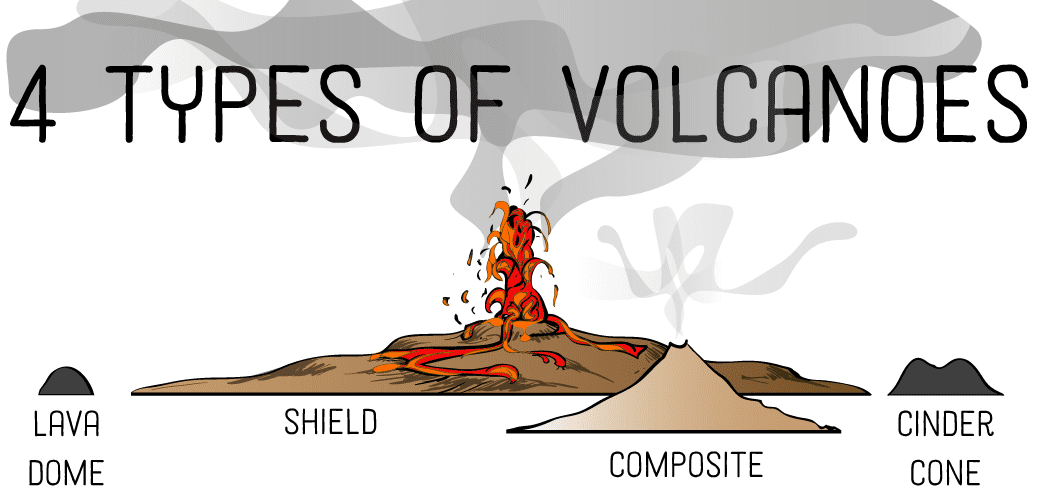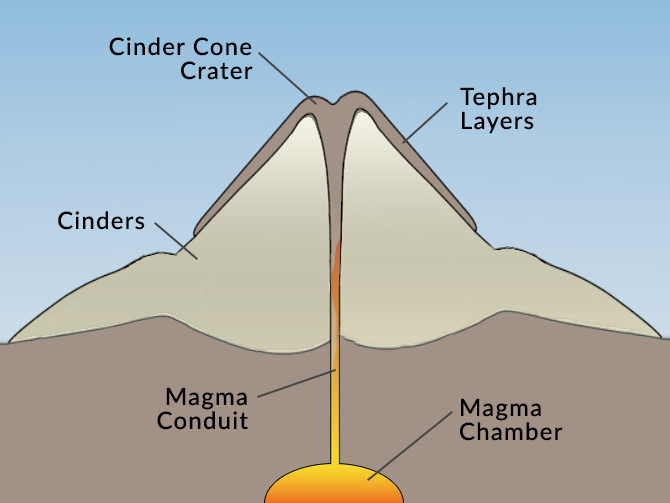Formation of Volcanoes 🔗
Volcanoes are formed when molten rock from the mantle breaks through the crust to the surface of Earth.
Over thousands of eruptions, layers of molten rock solidify on top of each other, causing the cone to grow in height!

Sketch this volcano diagram in your book with the labels. You may need to be able to label a volcano in the test!
The molten rock from the mantle breaks through the crust at weak, thin points. These are usually at or near plate boundaries because the rock is under immense pressure and can be brittle.
Watch this video. We are most interested in the first half for now.
Lava Viscosity 🔗
Viscosity is a measure of how easily a liquid can flow. Honey is very viscous (does not flow well), while water is not very viscous (flows well).
- Viscous Lava: Cannot flow very well - cannot move far from the main vent before cooling
- Not Viscous Lava: Can flow easily - will move a long distance from the main vent before cooling.
Pātai 🔗
Which of these volcanoes do you think have viscous and not viscous lava? Put your answers in your book.

Whakatika 🔗
Viscous: Composite, Cinder Cone, Lava Dome
Not Viscous: Shield
Types of Volcanoes 🔗
We are interested in these four main types of volcanoes. They have distinguishing features, all of which can be related back to the viscosity of their magma.
1. Shield 🔗
- Not very viscous lava
- Lava travels a long way before cooling, giving it a spread out shape
- Not very tall
- Not very steep
- NZ Examples: Banks Peninsula, Dunedin Peninsula, Mayor Island (Tuhua), Rangitoto Island

2. Cone 🔗
- Medium viscosity lava
- Lava cannot travel very far before cooling, thus making it grow very tall
- Very tall
- Very steep
- NZ Examples: Taranaki, Ruapehu, Tongariro, Ngāuruhoe, White Island (Whakaari)

3. Caldera 🔗
- High viscosity lava
- Very explosive
- The caldera is a hole in the ground left over from an enormous eruption (typically forms a lake)
- NZ Examples: Taupō, Okataina

4. Dome 🔗
- Not very tall
- Reasonably steep
- Medium viscosity lava
- Occur only for a short period of time, typically in volcanic fields like Auckland.
- NZ Examples: Mount Tauhara
